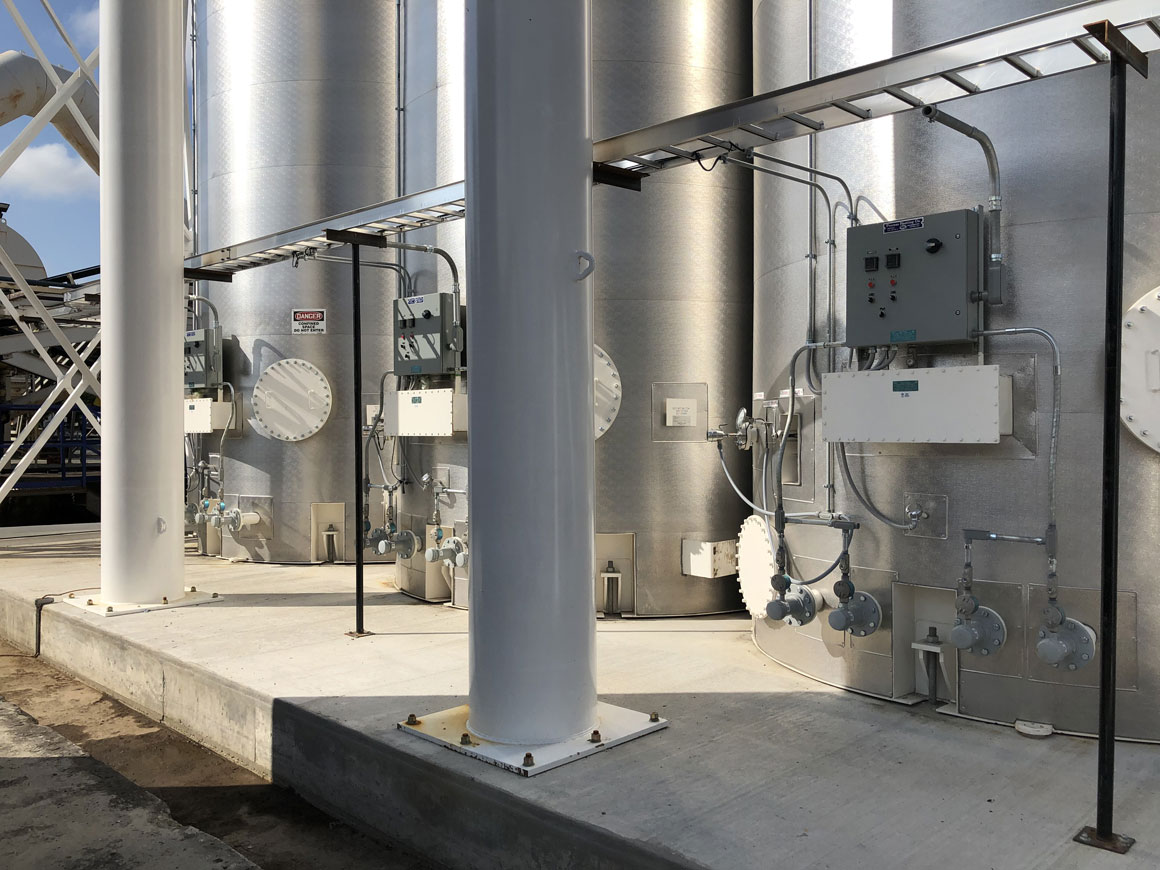
When choosing energy for asphalt heating, it’s important to look at the entire picture. Cost-per-unit of energy to heat asphalt and oil is certainly part of the puzzle — but it is not the only cost. Also important is the heater’s thermal efficiency. A small difference in efficiency can make a big difference in how much fuel a heater burns over its lifetime.
The Heat Is On
Get Current with Efficient and Cleaner Heat Sources at Your Plant
Asphalt Contractor magazine
As seen in January 2023 issue
With fuel and material prices on the rise, asphalt producers are finding it more challenging than ever to keep operating costs under control. Add new environmental regulations and initiatives into the mix, and they have what might seem like an impossible mission — to not only find the most efficient and cost-effective ways to run the plant, but also reduce or eliminate its emissions. There is an oft-overlooked aspect of asphalt production, however, that can make a difference in both realms — that of energy choices for heating asphalt and emulsions.
There’s no denying that energy costs contribute significantly to the operating costs of an HMA plant. But fuel choices can impact producers in more ways than just cost. And the form of energy they choose to heat their asphalt tanks, hot oil circulating systems, and fuel oil preheaters can actually help producers reach their goals.
Typically, the first question operators have is what’s the cheapest form of energy for heating? The answer, unfortunately, isn’t simple — and it is dependent on several variables, including local energy costs and the age of the equipment. Operators often make energy choices for heating their plant’s components based on current energy pricing trends. But the cost of natural gas, LP gas, fuel oils, and electricity have all fluctuated over the years.
At one time, fuel oil was the cheapest form of energy for heating. By the late 1990s, electricity became far less expensive than fossil fuels to use for heat. In the past 10 years, natural gas has become the least expensive energy choice for heat — if you’re looking only at energy prices.
But producers often overlook the fact that their energy choices create impacts that go beyond operational costs, and what seems to be a simple challenge actually requires additional considerations to reach optimal efficiency. When choosing energy for asphalt heating, it’s important to look at the entire picture. Cost-per-unit of energy to heat asphalt and oil is certainly part of the puzzle — but it is not the only cost. Also important is the heater’s thermal efficiency. A small difference in efficiency can make a big difference in how much fuel a heater burns over its lifetime.
The Issue with Efficiency
It is widely accepted that most fossil-fuel-fired burners only operate at 80 to 85 percent efficiency when new. What this means is on its best day, a burner is actually wasting 15 to 20 percent of its heat, which goes into the air as heat, exhaust, and burner emissions. Then, as the burner ages, its efficiency drops. And because fossil-fuel-fired asphalt heaters are maintenance-intensive, if they are not properly maintained and tuned, their efficiency drops even more significantly. In fact, by the time a fossil-fuel burner is 7 to 8 years old, its efficiency can easily have dropped to just 50 to 60 percent — meaning that up to 50 percent of the heat is wasted, going into the air as exhaust.
In comparison, an electric-powered asphalt tank or hot oil heater operates at 100 percent efficiency from day one — 100 percent of the heat is applied to the product, with no heat or emissions exhausted into the air. And over the lifetime of the heater, the electric efficiency never drops.
Table 1 below shows a recent fuel cost comparison between different forms of energy per 1 million BTUs, which is the approximate number of BTUs required to maintain 30,000 gallons of asphalt cement at 300˚ F over 24 hours in a tank with 3 inches of insulation.†
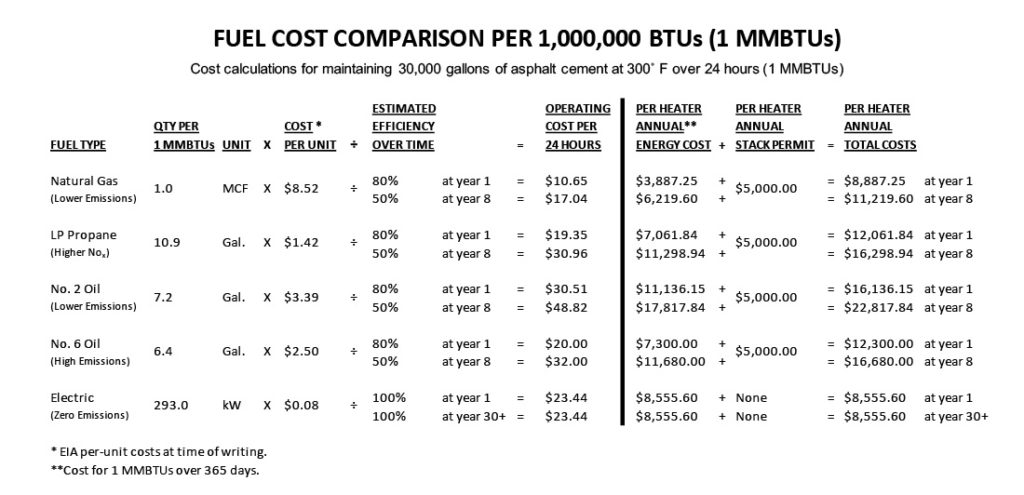
Check out PHCo's "By the Numbers-Electric is Better' comparison chart at the following link. There are dynamic fields where you can input your utility costs to calculate results.
In an initial assessment, looking at operating cost in Year 1, it would seem that natural gas, followed by LP propane gas, are the cheapest forms of heat energy. But we already know that fossil-fuel burners operate at only 80 to 85 percent efficiency at best — and their efficiency drops over time. When true efficiencies are considered, along with aging burners and poor maintenance practices, the cost gap narrows dramatically — especially keeping in mind that electric heaters operate at 100 percent efficiency throughout their lifetime. Add the cost of an annual per-heater stack permit, where electric heat requires no stack, and electric heat suddenly becomes the least expensive option.
Costs Per-Day and Per-Ton
Process Heating Company (PHCo), a manufacturer of low-watt-density electric heaters for asphalt plant products, has performed tests to find the specific costs accrued in heating asphalt and hot oil with electricity. The tests included asphalt storage tanks and a hot-oil system at a 500-ton drum mix plant that produced 2,400 tons per day. The asphalt tanks were well-insulated, holding 20,000-gallons of asphalt cement at 340˚ F.
Over a 3-week period, the electric tank heater consumed 192 actual kilowatt hours (kWh) per day while the plant was running. Using current industrial electric cost of $0.08 per kW (see Table 1), the cost per day for maintaining heat in the tank over 192 kWh is $15.36. The electrically heated hot oil system used 422 actual kWh per day during the same period while the plant was running. Applying the current industrial electric cost of $0.08 per kW, the cost per day to heat the plant’s hot oil is $0.08 x 422 kWh, or $33.76. The cost per ton of output can be determined by this formula: $28.99 / 2,400 tons produced per day, or $0.014 (1.4 cents per ton).
Because the plant had two identical asphalt storage tanks and the hot oil system, the total electricity costs per day using electric heaters would be $15.36 x 2 = $30.72 + $33.76 for a total of $64.48. Total cost per ton of output is $64.48 / 2,400 tons produced per day, or $0.0268 (2.7 cents per ton).
It should be noted that the plant where testing took place was in excellent condition, and the tanks and hot oil system were well-insulated. In order to achieve optimal electric rates, the equipment was interfaced with other large electric-using equipment to avoid adding to demand charges. Additionally, the electric heaters utilized time clocks for operating during off-peak hours, to take advantage of lowest possible rates without impacting performance or operation of the plant.
A Little More Math
An average drum mix asphalt plant using a PHCo hot oil heater will require a 140 kW heater, which is adequate for two 30,000-gallon asphalt tanks and associated jacketed pumps, meters and asphalt lines running around 4 hours a day in the summer and 6 hours a day in the winter. The same plant would use almost 20 gallons of diesel fuel per day in the summer and about 27 gallons per day in the winter (based on 80 percent efficiency — see Table 1).
At current industrial electricity costs of $0.08 per kW, a 140 kW heater running 4 hours per day (summer) would accrue $44.80 in daily costs, and 6 hours per day (winter) would accrue $67.20 in daily costs. Alternately, with diesel fuel costs of $3.36 per gallon (based on Table 1), daily asphalt heating costs would total the following: 20 gallons of diesel fuel (summer) at $67.20 per day and 27 gallons (winter) at $90.72 per day.
The Emissions Enigma
Solely looking at cost, electric heat eliminates some need for expensive permits because it operates without combustion or emissions. Adding a single stack at a plant can increase the annual permit cost by $5,000 or more. As shown in Table 1, No. 6 Oil produces high emissions. This type of fuel also often requires pre-heating, and typically must use special burners. LP propane gas produces greater levels of NOx. And while today’s No. 2 Oil (also known as heating and diesel oil) produces lower emissions than it has in the past, that energy source, as well as natural gas, both create some level of emissions at the plant — with associated stacks, permits and expenses.
But beyond costs, with increasing emission regulations and NAPA’s “The Road Forward” climate action plan, electric heat can help producers meet their sustainability goals. “The Road Forward” initiative, introduced by NAPA earlier in 2022, challenges asphalt producers and pavers to develop technologies and processes that can help the industry achieve net-zero carbon emissions by 2050. In addition to heating without emissions, electric heat also eliminates a source of fuel spills.
Additional Advantages of Electric Heat
Low-watt-density, drywell-style electric heaters are simple to install in most asphalt plants, with a complete installation of the heater, plumbing, piping and electrical hookup completed one or two days. They not only provide 100 percent efficient heat, but they also require little to no maintenance, further reducing a plant’s operating costs. Because they typically last more than 30 years, electric-powered plant heaters also enjoy a lifespan that lasts 3 to 4 times longer than fossil-fuel burners, which must be replaced every 8 to 10 years — reducing capital costs.
Better product quality is another benefit to using electric heat. Low-watt-density heaters, which dissipate controlled heat as low as 3 watts per square inch on the heater’s sheath, can prevent the coking and damaging of temperature-sensitive materials that often occurs with fossil-fuel-fired burners. In hot oil systems, this reduces or eliminates the need to change out expensive heat transfer oil.
†Source: Heatec Inc. Technical Paper T-140, “Heating and Storing Asphalt at HMA Plants”
To read the full Asphalt Contractor article Click Here.
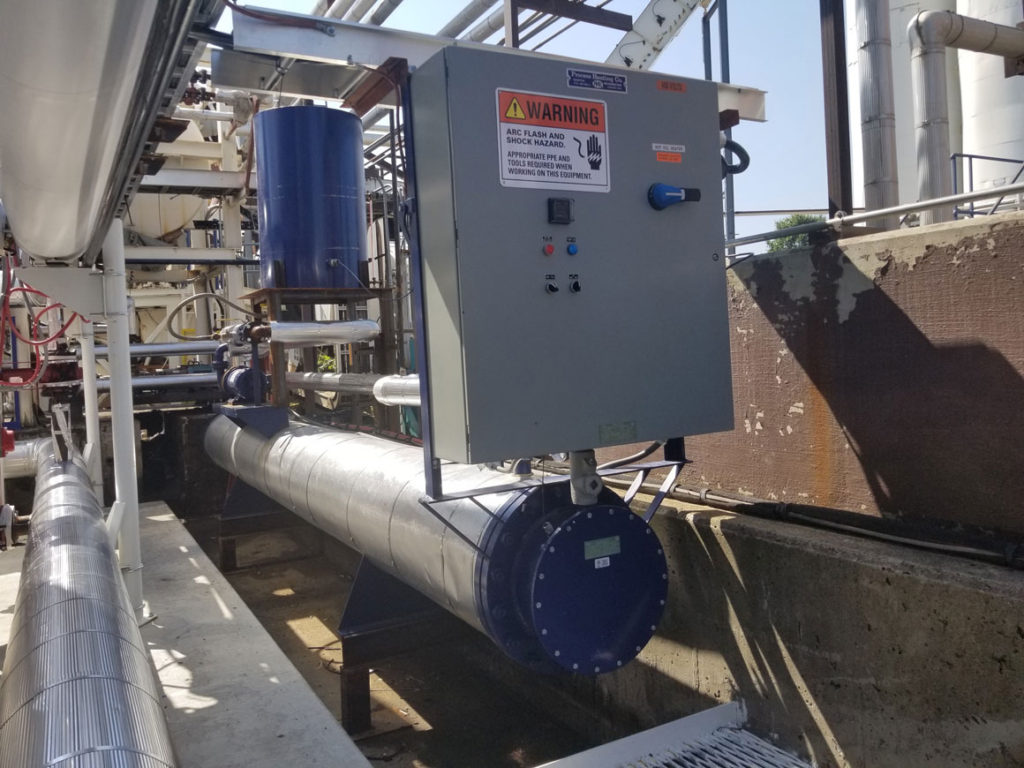
An average drum mix asphalt plant using a PHCo low-watt-density hot oil heater typically requires a 140 kW heater, which is adequate for two 30,000-gallon asphalt tanks and associated jacketed pumps, meters, and asphalt lines running approximately four hours a day in the summer and six hours a day in the winter. The same plant would use almost 20 gallons of diesel fuel per day in the summer and about 27 gallons per day in the winter.
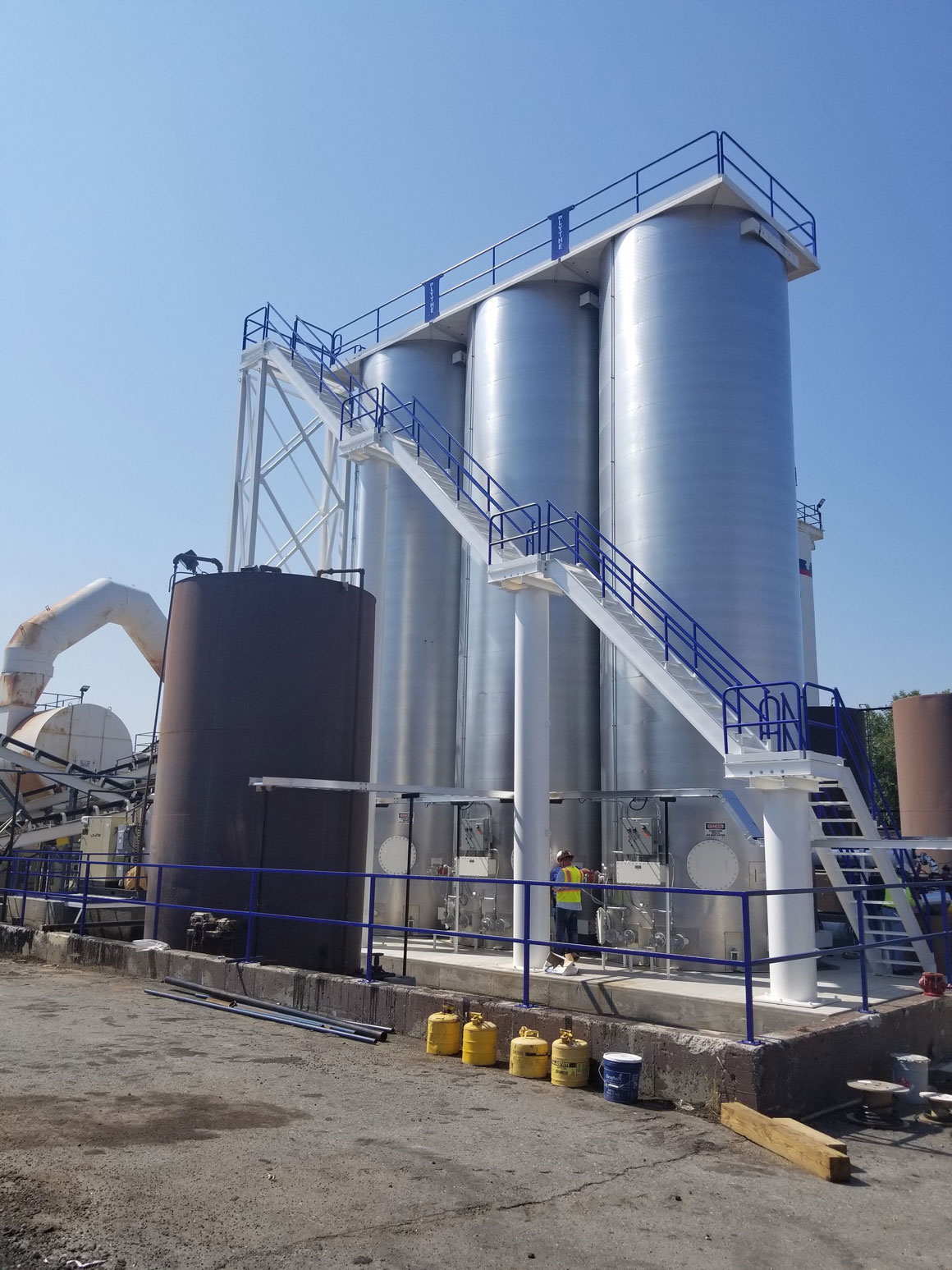
An average drum mix asphalt plant using a PHCo low-watt-density hot oil heater typically requires a 140 kW heater, which is adequate for two 30,000-gallon asphalt tanks and associated jacketed pumps, meters, and asphalt lines running approximately four hours a day in the summer and six hours a day in the winter. The same plant would use almost 20 gallons of diesel fuel per day in the summer and about 27 gallons per day in the winter.
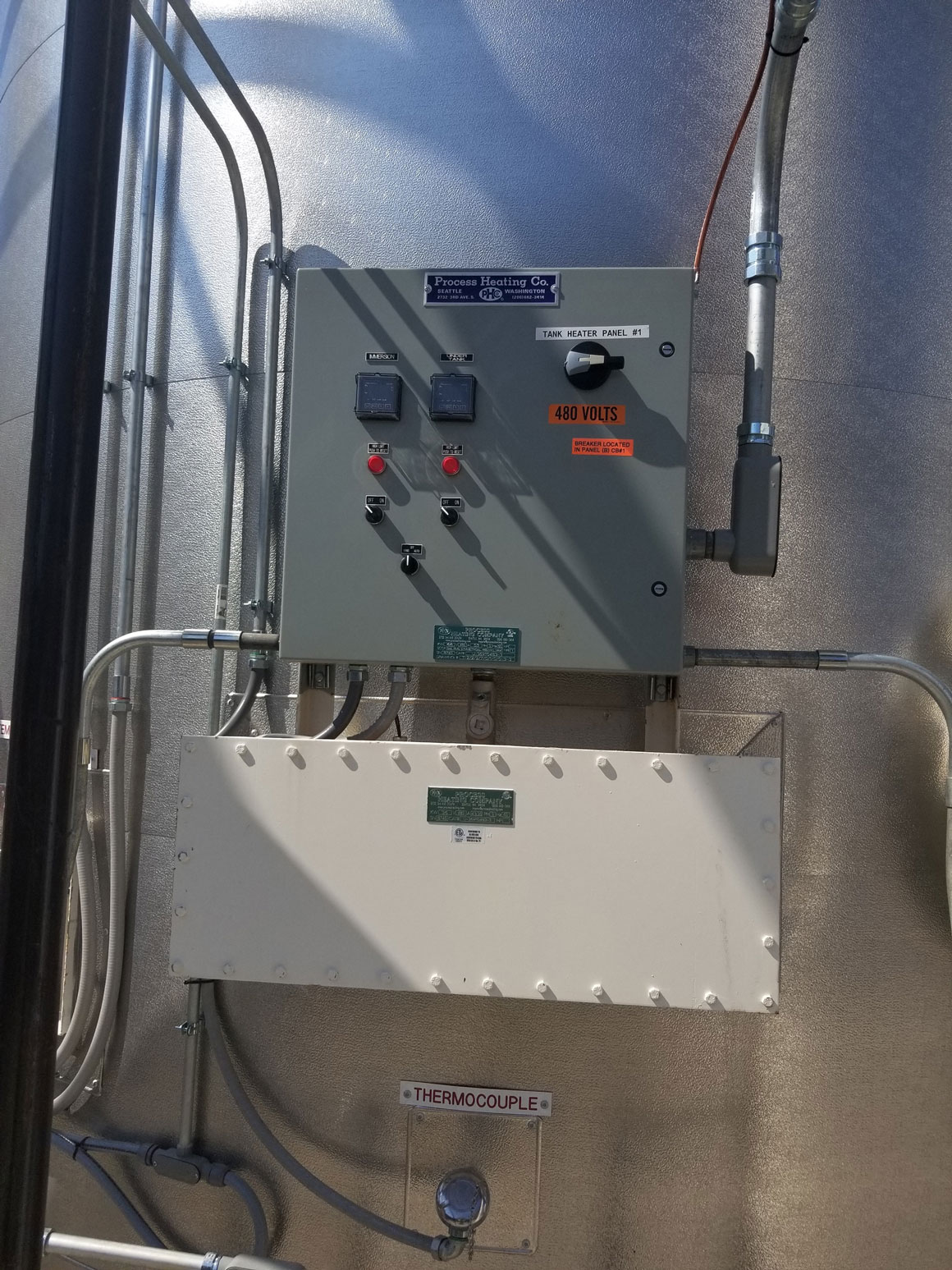
In order to achieve optimal electric rates, electric heaters can be interfaced with other large electric-using equipment to avoid adding to demand charges. By utilizing time clocks to operate during off-peak hours, producers can take advantage of the lowest possible electric rates without impacting performance or operation of the plant.
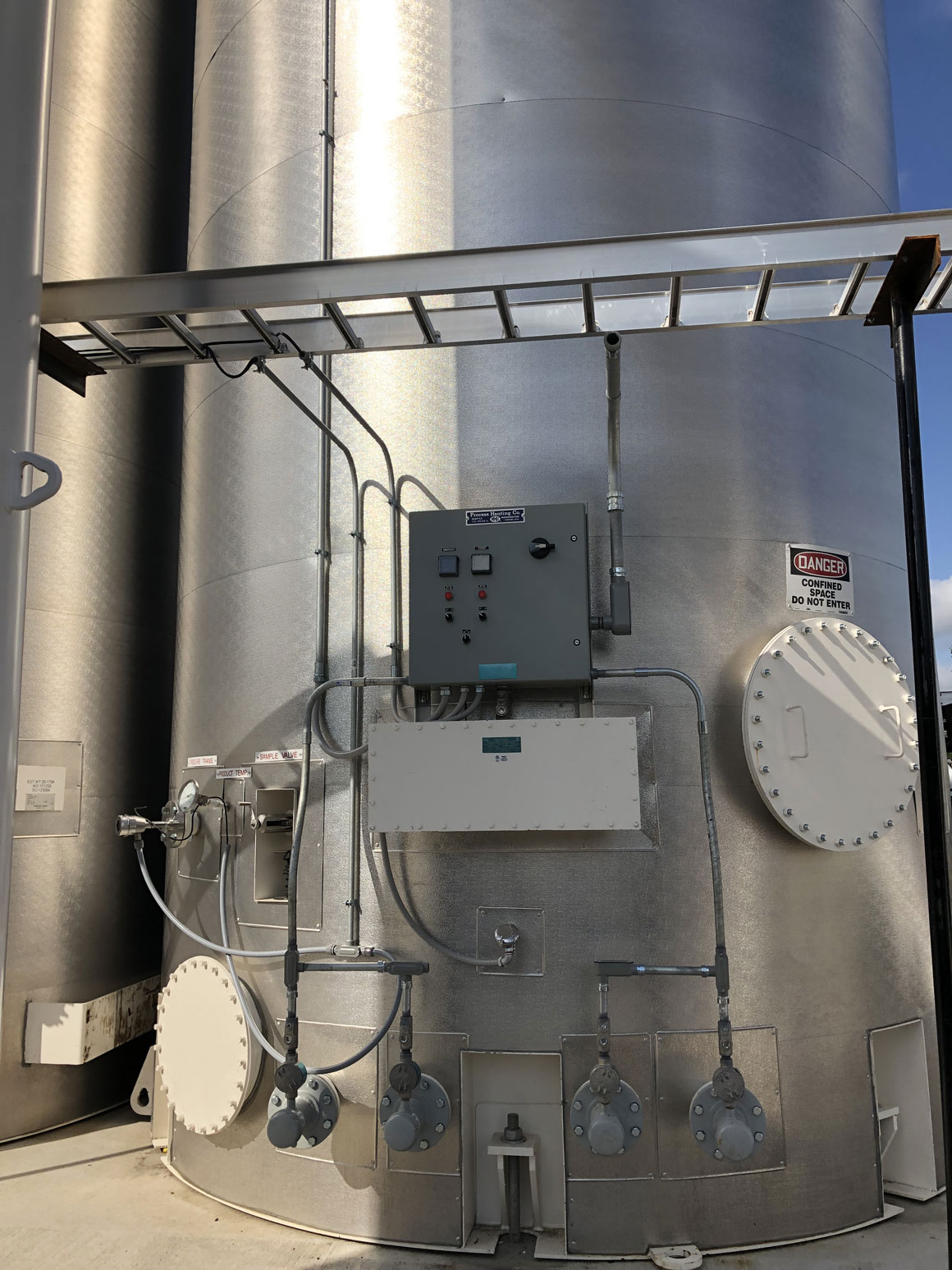
Electric heaters are simple to install in most asphalt plants: A complete installation of the heater, plumbing, piping, and electrical hookup can be completed two days or less. Low-watt-density electric heaters not only provide 100 percent efficient heat, but they also require little to no maintenance, further reducing a plant’s operating costs.

